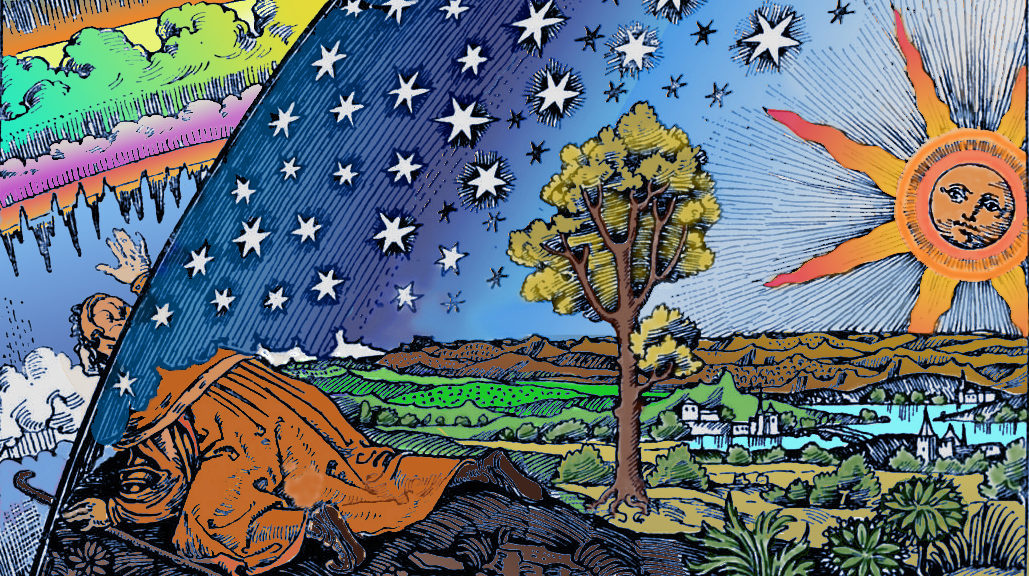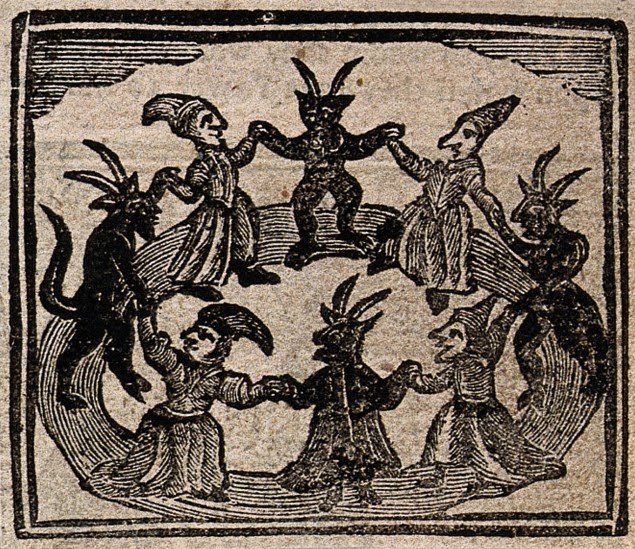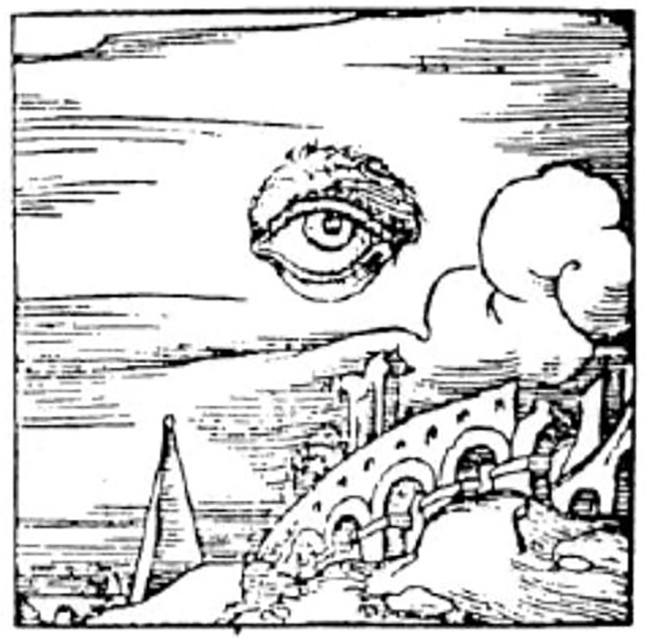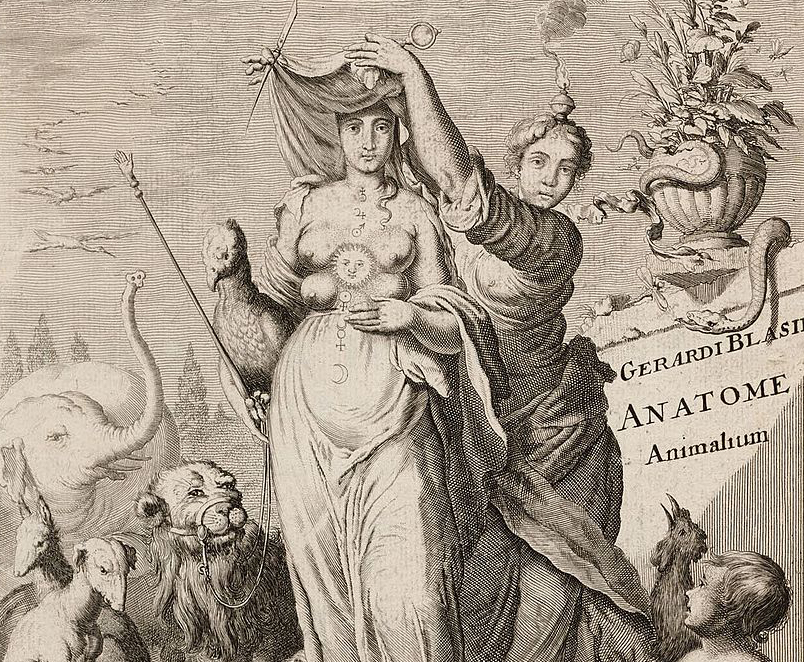
Piercing the veil
To find ‘the place where the sky and the earth touch,’ and open the mysterious gateway which separates this world from the other.
—Camille Flammarion
What is reality?
Science has proven the manifest world to be as illusory as ancient spiritual wisdom proclaimed it. What we perceive as solid matter is really vibrating energy. The act of observing something physically alters it on a subatomic level. Our bodies emit signals that escape our notice yet have a discernible effect on the world around us.
Primitive ways of understanding the world, dismissed since the Enlightenment, are now being rediscovered by science.
Magicians, alchemists, scientists and poets alike all seek to penetrate the mysteries that dance just beyond our field of vision. We yearn to draw back the curtain of illusion and glimpse the inner workings of the universe. The paths we walk, the methods we employ, and the worldviews we hold may drastically differ, but our aims stem from the same innate drive to explore and discover. Some of us direct our attention outward, dissecting the mechanical workings of the world. Some are drawn inward to explore the hidden mysteries within.
He would live on those exalted heights, where the seer now dwells. He longs to be above the plane of sorrow and trial and human misery.
—Louis Plante
I believe all paths lead to the same place, eventually.
The Ancient Egyptian mysteries tell us that “no mortal shall pierce the Veil of Isis.” Her mysteries lie far beyond our puny ability to comprehend. Yet we all have the seed of desire within us to try—a spark drawn like a moth back to the flame of its source. So we seek.
Celtic tales warn that the veil between the worlds grows thinner at thresholds, or liminal times and places where one state gives way to another. At the crossroads of death and birth, a portal opens to the Otherworld. Some mortals stumble upon these accidentally, and their encounter with the primal forces leaves them permanently altered. Others search their whole lives and never find the way through. The universe has a perverse sense of humor.
The engraving pictured above often appears in texts relating to astronomy, alchemy, Hermeticism and other eoteric teachings. First published in a book by French astronomer Camille Flamarrion, it depicts a seeker who has found a way beyond the veil and manages to sneak a peek at the machinations of heaven. He writes:
Whether the sky be clear or cloudy, it always seems to us to have the shape of an elliptic arch; far from having the form of a circular arch, it always seems flattened and depressed above our heads, and gradually to become farther removed toward the horizon. Our ancestors imagined that this blue vault was really what the eye would lead them to believe it to be; but, as Voltaire remarks, this is about as reasonable as if a silk-worm took his web for the limits of the universe. …
A naïve missionary of the Middle Ages even tells us that, in one of his voyages in search of the terrestrial paradise, he reached the horizon where the earth and the heavens met, and that he discovered a certain point where they were not joined together, and where, by stooping his shoulders, he passed under the roof of the heavens…
Taken literally, the Flammarion engraving can be seen to represent a flawed and ignorant Medieval cosmology. As a metaphor for the scientific or mystical quest for knowledge, however, its has a certain resonance. The boundary where the earth and the heavens meet isn’t a geographical one, but it does exist. Looking at the engraving reminds us how close, thin, and omnipresent the veil between worlds is—as if we might pop our heads through at any time and encounter the infinite.
The veil of projection
Buddhist thought considers the reality we perceive to be a mere a projection of our inner state. The reality we live in is unreal. The first veil we need to penetrate, then, is the illusion of our projections, the clouded lens of self through which we experience the world. The clearer our lens, the closer we come to seeing things as they truly are.
To clear our lens we must do the inner work of confronting our shadow and bringing the light of consciousness to our darkest depths. This union of opposites—light and dark, consciousness and unconscious—releases us from the patterns that keep us stuck in our illusions. It’s an inner alchemical process that burns away our dross to create a clearer window through which our inner light can shine upon the world. This new light, whose source is the divine within, reveals our projections for what they are and allows us to look at reality with new eyes.
It’s not an easy process, which is why so few seem to achieve it.
There is no coming to consciousness without pain… People will do anything, no matter how absurd, in order to avoid facing their own soul. One does not become enlightened by imagining figures of light, but by making the darkness conscious.”
—Carl Gustav Jung
The veil of perception
Even with a clear lens, our ability to perceive the subtle is limited, which brings us to the second veil. In an infinite universe, our finite brains filter out most of reality, tuning us in to a mere narrow slice of the full spectrum. Many ancient people, including the Celts, believed other worlds or levels of existence lay parallel to our own, separated only by a veil whose thickness waxes and wanes at different times and place. Yet for most of us it remains invisible because we’re not tuned in to it.
The astral universe . . . is hundreds of times larger than the material universe . . .[with] many astral planets, teeming with astral beings.
—P. Yogananda
Some seekers believe there are many different planes of existence, populated by a variety of beings, creating layer upon layer of veils that form concentric spheres of being. The plane nearest to our own is the astral plane, which contains the energetic blueprints for the manifest world. It’s home to the spiritual clockwork mechanism that governs manifest reality, operating in much the way as the laws of physics. This is the realm of spirit, the fae, and ancestral knowledge, where our thoughts can influence reality.
Now we approach with reverent hush, with the awe of sacred awareness, the great spiritual laws governing all outer manifestation.
—Saint Germain
The Veil of Isis
If we could pierce through all those concentric planes of existence, we would, in theory, finally come face to face with the central mystery of the universe, the divine creator who holds the keys to unlock the secrets of all existence. To access these keys, we must lift the veil of comprehension that prevents us from wrapping our finite minds around the true nature of reality.
The Egyptians deemed this impossible for mortals who, though they try to lift the veil of Isis, can’t seem to grasp beyond nature’s physical forms, said Theosophist Helena Blavatsky. Plutarch wrote of an Egyptian statue of a seated goddess bearing the inscription:
I am all that has been and is and shall be; and no mortal has ever lifted my mantle.
That hasn’t stopped seekers from employing a variety of esoteric techniques in the attempt. Ceremonial magicians use a symbolic gesture known as the Sign of the Rending of the Veil, whose intention is to open the veil of matter to access the mysteries beyond. It’s performed by extending the arms forward, with hands flat against each other, and spreading them apart in a rending motion until the arms are fully extended to each side, forming the body into a T shape.
The key to lifting any of these veils is to seek the help and guidance of the higher self, or godself. Our mortal minds may be too limited to achieve such a feat, but we are also divine beings with an inner spark of spirit that is always connected to its source. It is only through that connection that we can hope to penetrate the cosmic mysteries beyond the veil and discover the true nature of reality.
Featured image: Flammarion engraving, PD-US


